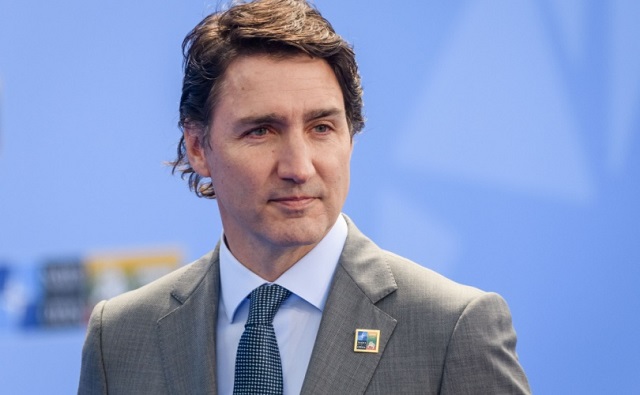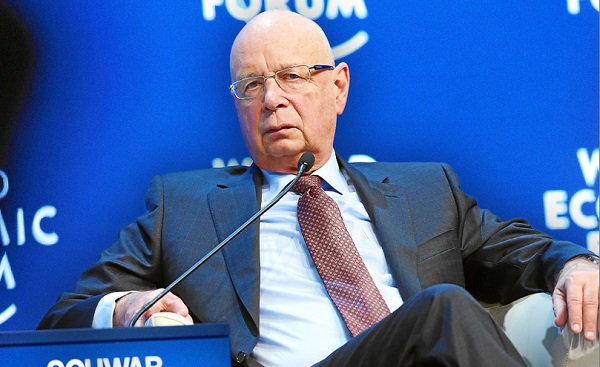Censorship Industrial Complex
Canada wants to add DEI measures to globalist WHO pandemic treaty

From LifeSiteNews
Canada is suggesting measures to counteract ‘misinformation’ and promote ‘marginalized’ groups are included in the WHO pandemic treaty, an initiative which experts have warned will undermine national sovereignty.
Canada wants to add misinformation and diversity, equity, and inclusion (DEI) measures to the World Health Organization’s controversial global pandemic treaty.
According to a July summary report from the Public Health Agency of Canada (PHAC), Canada is suggesting measures to counteract “misinformation” and promote “marginalized” groups be added to the WHO global pandemic treaty.
“Comprehensive prevention strategies, inclusive surveillance practices, and addressing challenges for marginalized communities are essential for effective pandemic prevention,” it said.
“Data ownership, privacy, inclusivity, race-based data and cultural sensitivity are important issues which could be given greater consideration,” the report continued.
“Data collection can be a challenge, compounded by strained relationships between Indigenous people and the health system, marked by trust deficits and ingrained power differentials,” it claimed.
The report discussed Canada’s participation in the WHO global pandemic treaty. Formally known as the Pandemic Accord, the agreement would give the WHO increased power over Canada and other countries in the event of another “pandemic” or other so-called emergencies.
The PHAC report further discussed the importance of countering so-called “misinformation” in the event of another pandemic.
“Countering misinformation and disinformation is critical to pandemic response efforts, as seen by its impact on vaccination and immunization rates around the world,” the report said.
“Efforts should be made to hold social media platforms accountable for the content they host. However, it is imperative to address misinformation in a manner that respects freedom of speech and expression,” it continued.
However, it seems unlikely that those “countering misinformation” would work to safeguard opinions that differ from the globalist narrative, considering Prime Minister Justin Trudeau’s response to the 2022 Freedom Convoy which protested COVID regulations.
In addition to using violent police force to drive the protestors out of Ottawa, the Trudeau government froze the bank accounts of Canadians who donated to the protest.
In addition to potentially suppressing legitimate opinion, Conservative MP Colin Carrie has warned that the treaty could “institutionalize” freedom-throttling COVID “pandemic mistakes.”
Similarly, Conservative MP Leslyn Lewis has repeatedly warned that the new International Health Regulations (IHR) contained in the treaty will compromise Canada’s sovereignty by giving the international organization increased power over Canadians.
Lewis also gave her endorsement of a petition demanding the Liberal government under Trudeau “urgently” withdraw from the United Nations and its WHO subgroup, due to the organizations’ undermining of national “sovereignty” and the “personal autonomy” of citizens.
The petition warned that the “secretly negotiated” amendments could “impose unacceptable, intrusive universal surveillance, violating the rights and freedoms guaranteed in the Canadian Bill of Rights and the Charter of Rights and Freedoms.”
Censorship Industrial Complex
Is free speech over in the UK? Government censorship reaches frightening new levels

From LifeSiteNews
By Frank Wright
Instead of changing policies which threaten the collapse of Western civilization, the liberal-global governments prefer to make public opposition to their politics a crime.
The UK’s crackdown on free speech continues, with two online platforms withdrawing over censorship concerns – whilst liberal-critical speakers are banned from entering Britain, and even arrested on arrival.
Following the introduction of laws which could see online platforms fined millions of pounds, free speech social media company Gab and video sharing platform Bitchute have withdrawn their services from UK users.
As Reclaim the Net, a UK-based online freedom campaign group, said on March 28:
“The British government has begun aggressively extending its censorship regime beyond its borders, invoking the sweeping powers granted by the Online Safety Act 2023 to demand compliance from foreign-based platforms.”
Bitchute withdrew its services from UK users “over online censorship laws,” as the Free Speech Union reported on April 10. Gab’s statement, published on its UK domain, said the company was acting to protect British users from being jailed for posting on its platform:
After receiving yet another demand from the UK’s speech police, Ofcom, Gab has made the decision to block the entire United Kingdom from accessing our website.
This latest email from Ofcom ordered us to disclose information about our users and operations. We know where this leads: compelled censorship and British citizens thrown in jail for ‘hate speech.’ We refuse to comply with this tyranny.
The UK government claims its laws support “online safety” – but as Reclaim the Net explains, “critics argue … the term … is being used as a smokescreen for state-sanctioned thought control.”
The future of information in Britain looks bleak, as one UK commentator said, promising a “TV version” of the internet – sterilized by UK government media watchdog Ofcom:
“Unless the White House really forces Britain to do it, Ofcom will not be abolished, because the mainstream parties approve of it and no party that doesn’t will be allowed anywhere near power.”
Millennial Woes concludes that there is likely a “hit list” of further online platforms to be taken down in order, beginning with video outlets Odysee and Rumble, the messenger service Telegram, then the free speech publisher Substack – and on to Elon Musk’s X.
Woes warns:
“If allowed to continue in its current mode, Ofcom will take down the platforms it wants to, then tame the others by hook or by crook. The Internet in Britain will be a homogenised, redacted farce – a pathetic ‘TV version’ of what people in more civilised countries have.”
Cambridge professor arrested
The charge of “state-sanctioned thought control” is reinforced by the arrest – on Good Friday –-of a Palestinian Christian and Cambridge University professor at London’s Heathrow Airport. The reason for Professor Makram Khoury-Machool’s detention was that he has spoken out against Israel’s war in Gaza, as reports from the UK said.
“Keir Starmer’s long and intensifying war on pro-Palestine, anti-genocide speech through the misuse of the Terrorism Act … has continued to escalate,” noted UK outlet Skwawkbox, which covers stories such as this – neglected by the mainstream press “because it doesn’t fit their agenda.”
Professor Khoury, whose speech was criminalized under anti-terror laws, had in the past co-founded an anti-extremism institute in 2016 at Cambridge University.
British left-populist George Galloway responded on X (formerly Twitter), saying the arrest of this “gentle, devout moderate academic father” suggests that the “government has declared war on its own citizens, that liberty is dead in this land, and that Britain is no longer a safe country.”
Galloway’s warning of “It can happen to you. And it will” came a day after reports that a French philosopher noted for his outspoken criticism of mass migration had been banned from entering the UK.
French anti-migration speaker banned
Renaud Camus is the author of The Great Replacement – coining a term now used to describe the liberal-global policy of the replacement of Western populations via mass immigration.
The “great replacement” is routinely “debunked” by the ruling elite as a “conspiracy theory.” As Camus once said to Britain’s Matt Goodwin, “How can it be debunked when it is evident in every street?”
He was due to speak at a “remigration conference” in England on April 26. Organized by the nationalist Homeland Party, it is dedicated to the discussion of policies similar to those now being enacted by the Trump administration.
According to the Daily Telegraph, Camus was denied entry to the UK by government order.
In an email seen by The Telegraph, the Home Office informed Mr Camus that he had been denied the electronic travel authorisation (ETA) needed to enter Britain.
‘Your presence in the UK is not considered to be conducive to the public good,’ the email read.
The Telegraph reports that Mr Camus, “who is gay and has advocated for non-violence,” supplied one convincing explanation for his treatment:
[He] told The Telegraph that ‘of all the European governments guilty’ of allowing unchecked migration, ‘the British government is one of the guiltiest’.
‘No wonder it does not want me to speak,’ Mr Camus added.
The fact the British government is banning speakers who promote policies now being enacted with widespread support in the United States has not only provoked criticism – it may derail UK/U.S. trade negotiations.
Days ago, Vice President JD Vance warned UK Prime Minister Keir Starmer that Britain will get no deal with the U.S. over tariffs if its “hate speech” laws remain in place.
“Sir Keir Starmer must embrace Donald Trump’s agenda by repealing hate speech laws in order to get a trade deal over the line, a Washington source has told The Independent.”
A “Washington source” told the UK-based Independent, “No free speech, no deal. It is as simple as that.”
Vance has been a stern critic of British and European moves towards increasing censorship and the suppression of freedom of opinion, describing it in his February Munich speech as a “threat” to democracy “from within” Western Europe – and one which is led by its liberal-globalist governments.
Vance is reportedly “obsessed by the fall of Western civilisation,” The Independent’s Washington source explained. It is clear that Vance believes that this fall is very much a threat created by the political decisions of governments like Starmer’s.
The use of “hate speech” and “anti-terrorism” laws in these cases shows how the UK state-sanctioned suppression of speech affects anyone – from the left, right, or from the Christian faith – who criticizes the policies of the government.
These are not fringe extremist views, but those held by increasing numbers of ordinary people in Britain and throughout the Western world. Instead of changing policies which threaten the collapse of Western civilization, the liberal-global governments prefer to make public opposition to their politics a crime.
In the case of the British state, its hardline stance to defend its idea of democracy from free speech is now threatening its economic future. The politics and laws celebrated as the guarantee of safety increasingly resemble a form of extremism which will not tolerate debate.
Business
‘Great Reset’ champion Klaus Schwab resigns from WEF

From LifeSiteNews
Schwab’s World Economic Forum became a globalist hub for population control, radical climate agenda, and transhuman ideology under his decades-long leadership.
Klaus Schwab, founder of the World Economic Forum and the face of the NGO’s elitist annual get-together in Davos, Switzerland, has resigned as chair of WEF.
Over the decades, but especially over the past several years, the WEF’s Davos annual symposium has become a lightning rod for conservative criticism due to the agendas being pushed there by the elites. As the Associated Press noted:
Widely regarded as a cheerleader for globalization, the WEF’s Davos gathering has in recent years drawn criticism from opponents on both left and right as an elitist talking shop detached from lives of ordinary people.
While WEF itself had no formal power, the annual Davos meeting brought together many of the world’s wealthiest and most influential figures, contributing to Schwab’s personal worth and influence.
Schwab’s resignation on April 20 was announced by the Geneva-based WEF on April 21, but did not indicate why the 88-year-old was resigning. “Following my recent announcement, and as I enter my 88th year, I have decided to step down from the position of Chair and as a member of the Board of Trustees, with immediate effect,” Schwab said in a brief statement. He gave no indication of what he plans to do next.
Schwab founded the World Economic Forum – originally the European Management Forum – in 1971, and its initial mission was to assist European business leaders in competing with American business and to learn from U.S. models and innovation. However, the mission soon expanded to the development of a global economic agenda.
Schwab detailed his own agenda in several books, including The Fourth Industrial Revolution (2016), in which he described the rise of a new industrial era in which technologies such artificial intelligence, gene editing, and advanced robotics would blur the lines between the digital, physical, and biological worlds. Schwab wrote:
We stand on the brink of a technological revolution that will fundamentally alter the way we live, work, and relate to one another. In its scale, scope, and complexity, the transformation will be unlike anything humankind has experienced before. We do not yet know just how it will unfold, but one thing is clear: the response to it must be integrated and comprehensive, involving all stakeholders of the global polity, from the public and private sectors to academia and civil society …
The Fourth Industrial Revolution, finally, will change not only what we do but also who we are. It will affect our identity and all the issues associated with it: our sense of privacy, our notions of ownership, our consumption patterns, the time we devote to work and leisure, and how we develop our careers, cultivate our skills, meet people, and nurture relationships. It is already changing our health and leading to a “quantified” self, and sooner than we think it may lead to human augmentation.
How? Microchips implanted into humans, for one. Schwab was a tech optimist who appeared to heartily welcome transhumanism; in a 2016 interview with France 24 discussing his book, he stated:
And then you have the microchip, which will be implanted, probably within the next ten years, first to open your car, your home, or to do your passport, your payments, and then it will be in your body to monitor your health.
In 2020, mere months into the pandemic, Schwab published COVID-19: The Great Reset, in which he detailed his view of the opportunity presented by the growing global crisis. According to Schwab, the crisis was an opportunity for a global reset that included “stakeholder capitalism,” in which corporations could integrate social and environmental goals into their operations, especially working toward “net-zero emissions” and a massive transition to green energy, and “harnessing” the Fourth Industrial Revolution, including artificial intelligence and automation.
Much of Schwab’s personal wealth came from running the World Economic Forum; as chairman, he earned an annual salary of 1 million Swiss francs (approximately $1 million USD), and the WEF was supported financially through membership fees from over 1,000 companies worldwide as well as significant contributions from organizations such as the Bill & Melinda Gates Foundation. Vice Chairman Peter Brabeck-Letmathe is now serving as interim chairman until his replacement has been selected.
-

 2025 Federal Election2 days ago
2025 Federal Election2 days agoAs PM Poilievre would cancel summer holidays for MP’s so Ottawa can finally get back to work
-

 armed forces1 day ago
armed forces1 day agoYet another struggling soldier says Veteran Affairs Canada offered him euthanasia
-

 Opinion13 hours ago
Opinion13 hours agoCanadians Must Turn Out in Historic Numbers—Following Taiwan’s Example to Defeat PRC Election Interference
-

 International21 hours ago
International21 hours agoHistory in the making? Trump, Zelensky hold meeting about Ukraine war in Vatican ahead of Francis’ funeral
-

 C2C Journal16 hours ago
C2C Journal16 hours ago“Freedom of Expression Should Win Every Time”: In Conversation with Freedom Convoy Trial Lawyer Lawrence Greenspon
-

 Business21 hours ago
Business21 hours agoIt Took Trump To Get Canada Serious About Free Trade With Itself
-

 Automotive2 days ago
Automotive2 days agoCanadians’ Interest in Buying an EV Falls for Third Year in a Row
-

 conflict1 day ago
conflict1 day agoWhy are the globalists so opposed to Trump’s efforts to make peace in Ukraine?




